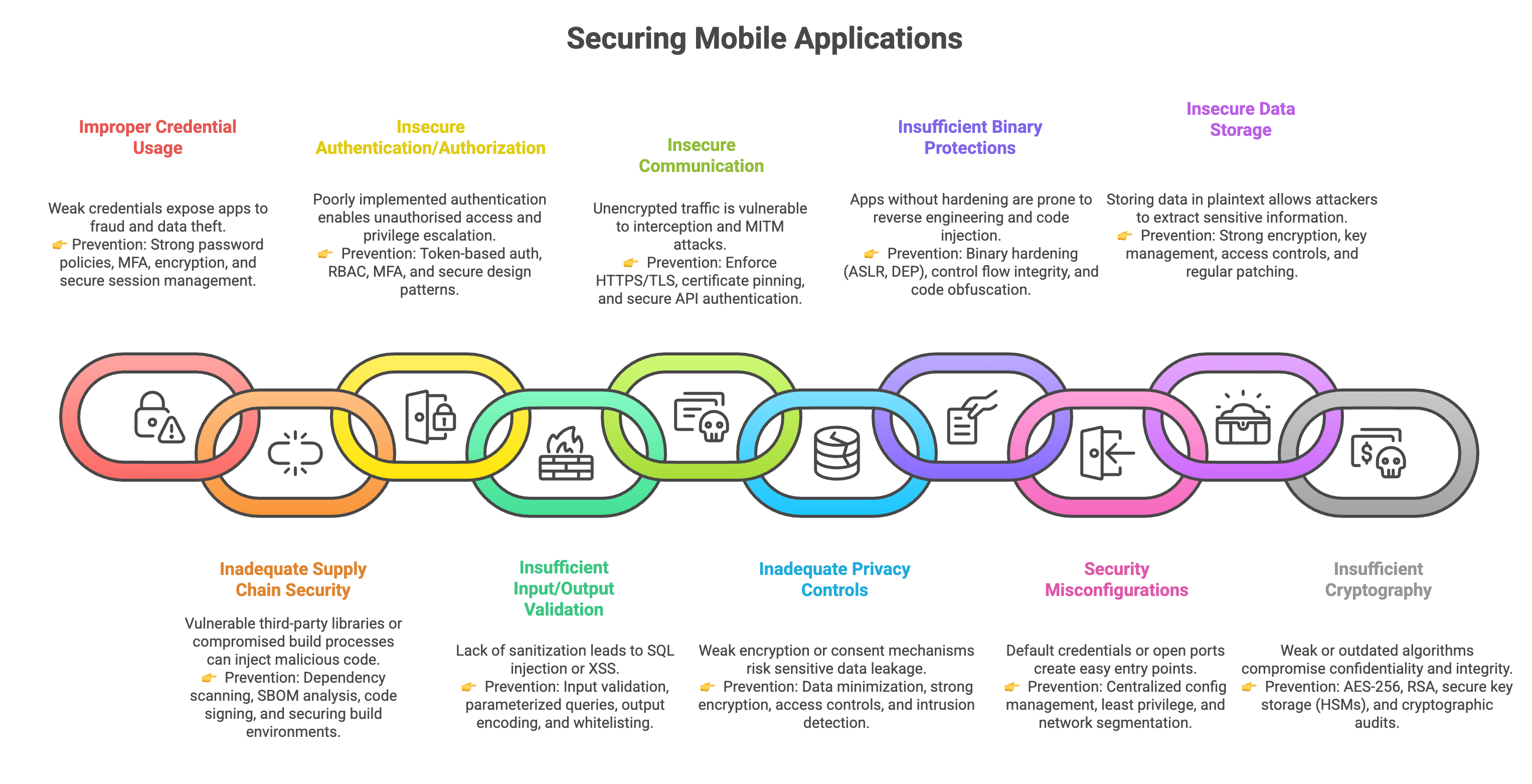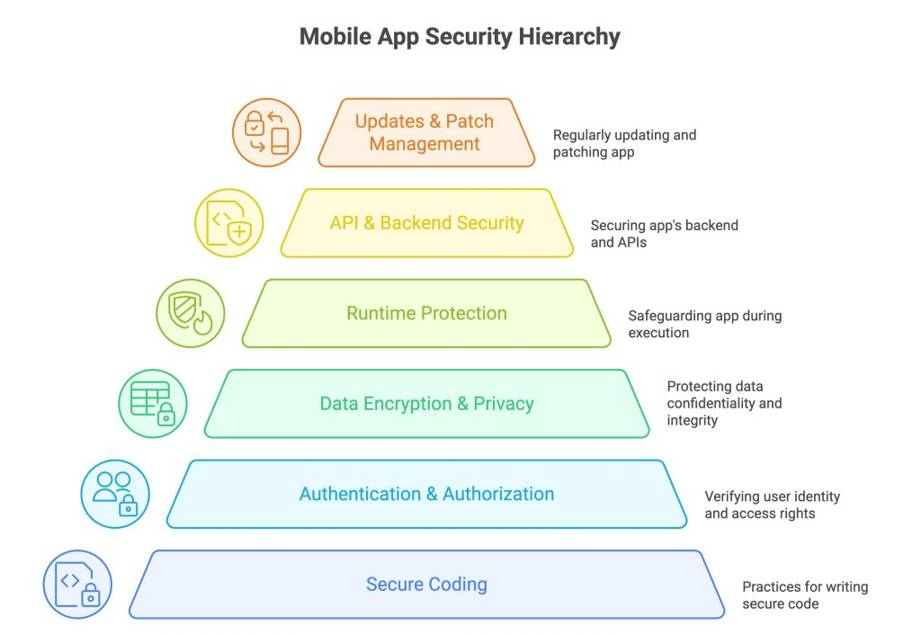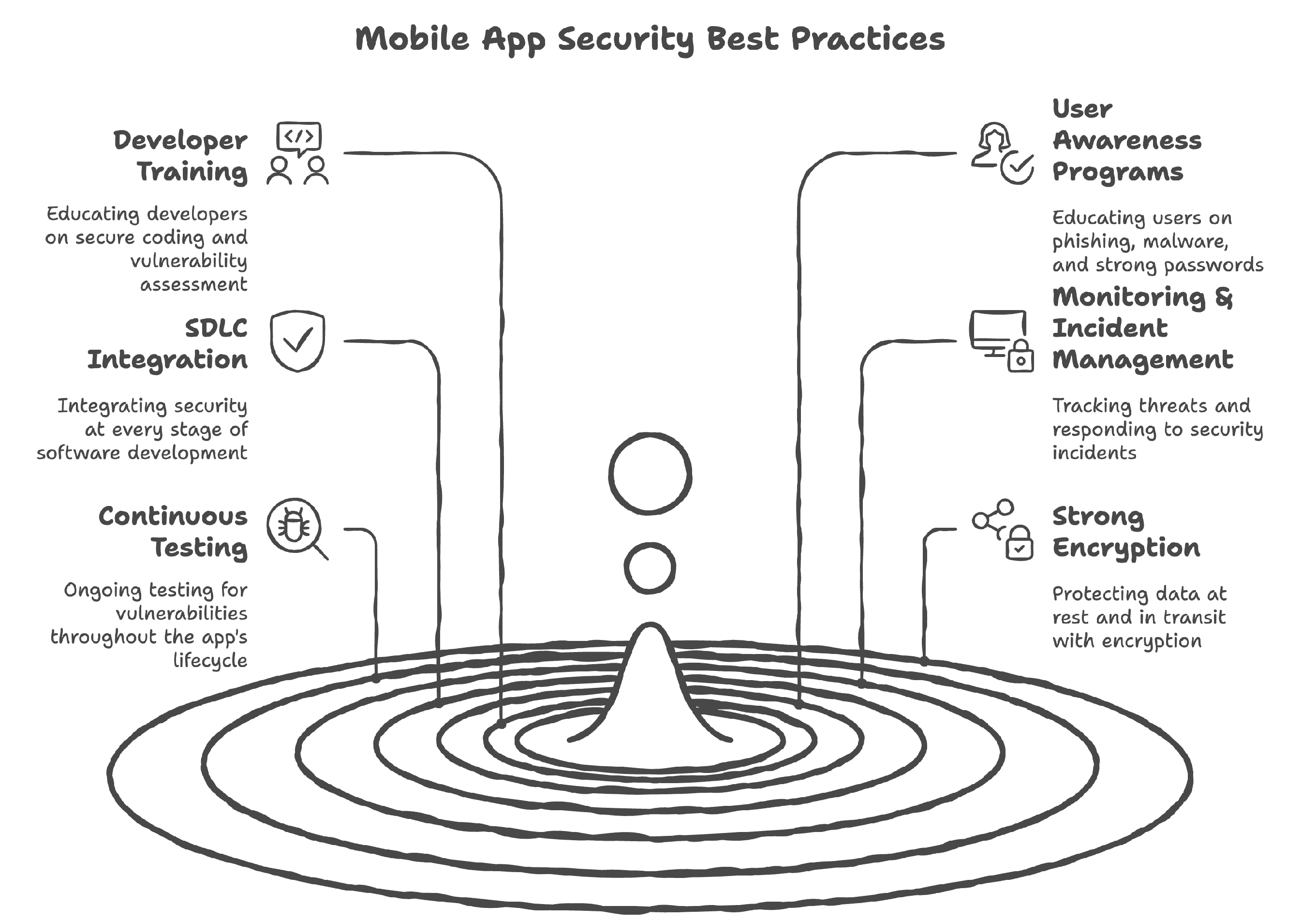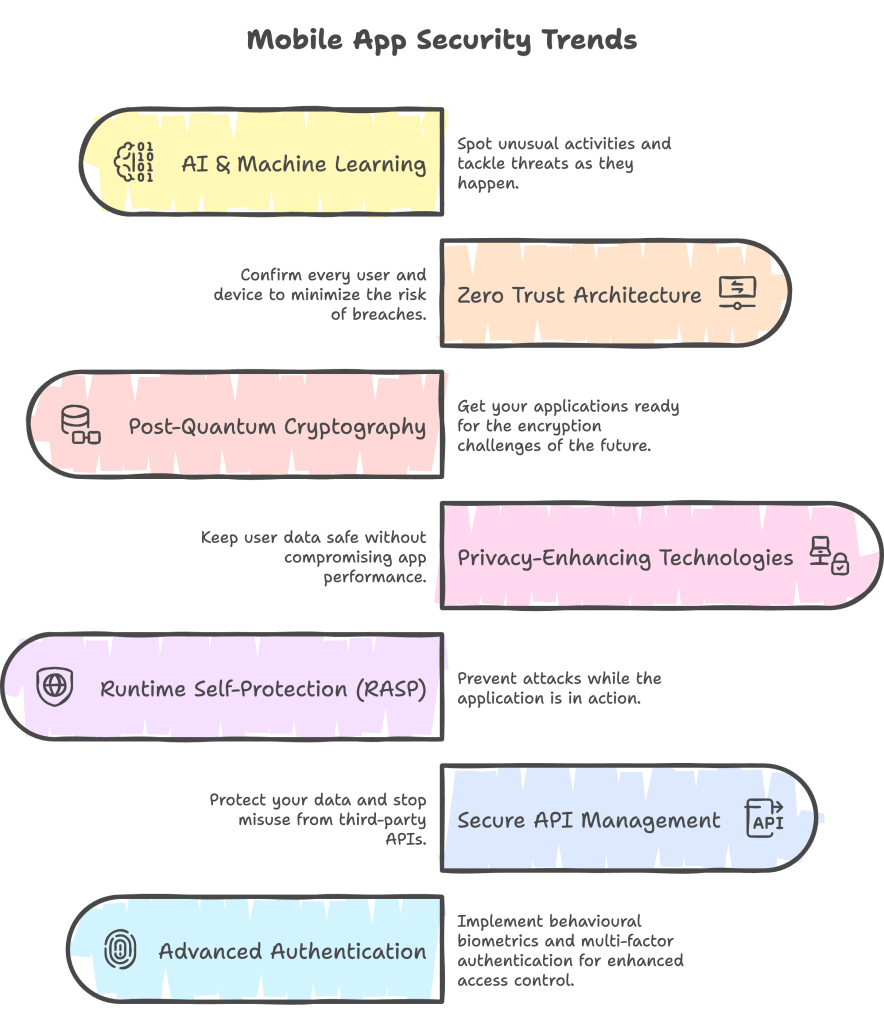Safeguarding Your Mobile Apps in a Digital-First World

Mobile Application Security
In today’s digital age, mobile apps play an important role in our personal and professional lives, assisting with tasks such as managing finances, shopping, and social connections. However, their popularity also attracts cybercriminals seeking to exploit vulnerabilities. Application security, or AppSec, safeguards apps from these threats, ensuring user data safety and maintaining the integrity of organisations. This blog will explore all the major mobile app security issues, offering essential strategies to safeguard your apps, practical resources for developers, best practices for various development stages, and current trends in mobile security. Our goal is to highlight the importance of mobile app security and provide straightforward tips for improvement.
What is Application Security?
Application security protects software from threats throughout the software lifecycle, integrating safety practices in development and deployment. Mobile apps face unique challenges due to connections with cloud services and APIs (Application Programming Interface).
Key goals include:
-
- Protecting sensitive data
- Preventing unauthorised access
- Minimising vulnerabilities
- Ensuring regulatory compliance
The OWASP Mobile Top 10 (2024)
The OWASP Mobile Top 10 outlines the most critical security risks in mobile apps, helping developers and organisations secure data, functionality, and user privacy. Updated regularly, it reflects the evolving cybersecurity landscape. For further information, please visit owasp.org.

Why Mobile App Security Matters
We rely on mobile apps daily for tasks like paying bills, booking appointments, and chatting with friends, but this raises security concerns. Here are key reasons why mobile security is crucial:
-
- Protecting Sensitive Data: Apps handle sensitive information, and weak security can lead to severe consequences if this data is exposed.
- Brand Reputation: A data breach can damage trust, leading users to uninstall apps and making it hard to regain their confidence.
- Legal Compliance: Laws such as GDPR and CCPA require strict security measures, and failing to comply can result in substantial fines.
- Cost Savings: Preventing security breaches is more economical than fixing them after they occur.
- Competitive Advantage: In a competitive market, strong security helps apps attract users who prioritise safety.
- Evolving Threats: Cybercriminals are increasingly sophisticated, making it essential to stay ahead of potential threats.
How to Secure Mobile Applications
Securing mobile applications is no longer optional—it is a business-critical requirement. With the proliferation of cyberattacks, data breaches, and regulatory pressures, ensuring the security of your mobile applications protects not just user data but also your brand reputation and revenue. The process requires a multi-layered, proactive, and ongoing approach.
Below is a comprehensive breakdown of the key strategies:

Mobile Application Security Testing Tools
To keep mobile applications secure, organisations rely on specialised testing tools. These tools help identify vulnerabilities early, validate app resilience against attacks, and ensure compliance with industry standards. Depending on the stage of development and the type of threats being tested, different categories of tools are used — from analysing source code to simulating real-world attacks.
The table below highlights some commonly used security testing tools:

Mobile Security – Best Practices
Securing mobile applications requires a mix of technical safeguards, developer awareness, and user education. The diagram below highlights key best practices — from integrating security into the software development lifecycle to encrypting sensitive data. These practices not only reduce risks but also build user trust and ensure compliance with industry standards.

Discover the latest trends in mobile app security
Mobile app security is rapidly evolving, with smarter ways to keep users and their data safe. AI now helps sport threats in real-time, Zero-trust checks every user and device, and new encryption methods prepare apps for the future. Privacy tools, live attack protection, safer API connections, and stronger logins like biometrics and multi-factor authentication are making apps both safer and easier to trust. Here are some of the latest mobile app security trends outlined in the diagram.

Conclusion
Mobile app security has become essential, not just a nice-to-have. These days, apps play a vital role in managing important tasks and handling sensitive information, which is why robust security measures are crucial. By embracing secure coding practices, implementing strong authentication and encryption, ensuring API security, and performing thorough monitoring and testing, developers and organisations can significantly reduce risks. Adopting mobile application security solutions, adhering to best practices, and following industry standards helps guarantee that apps are dependable, resilient, and user-friendly. Whether you’re developing consumer apps, enterprise solutions, or working on digital transformation projects, incorporating security into every phase of the app lifecycle is crucial for protecting your users, safeguarding your data, and maintaining your brand’s reputation.

